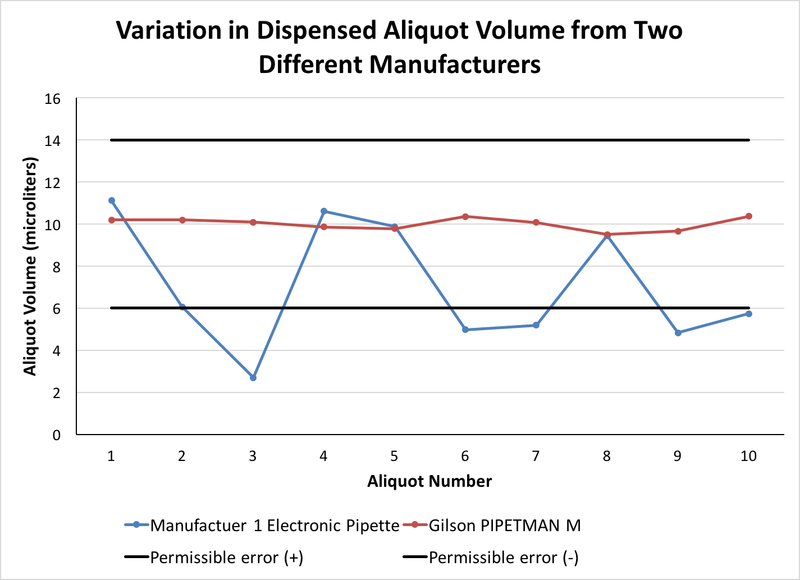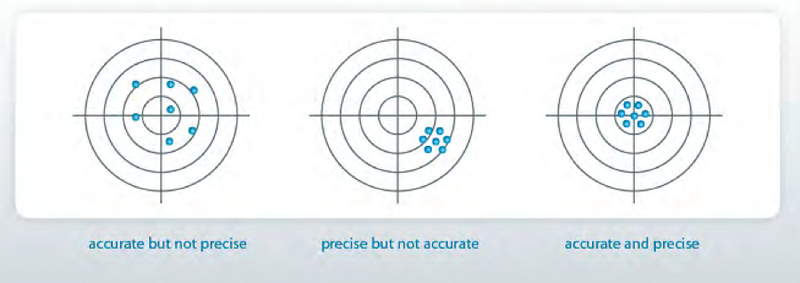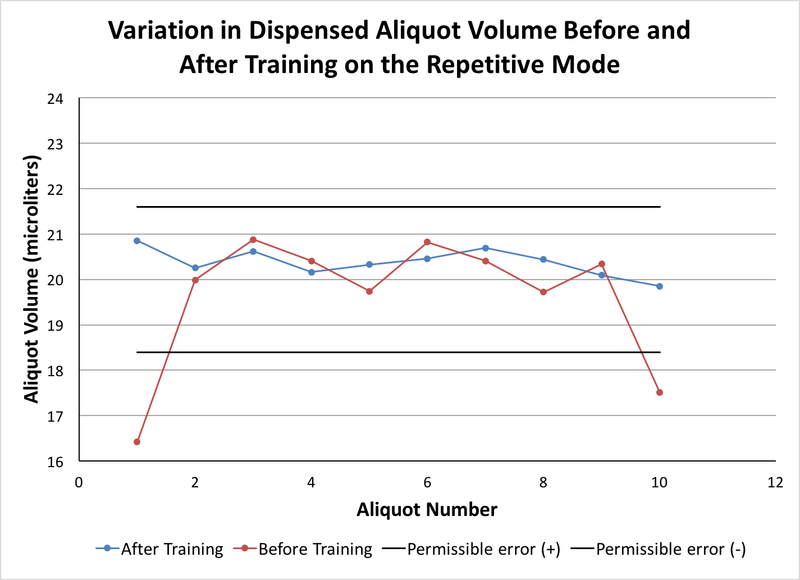Use of an Electronic Pipette to Ensure Reliable, Reproducible Results with Repetitive Pipetting
Advances in technology are pushing the limits of sample throughput for qPCR, ELISAs, and many other core biological assays. This has the potential to greatly improve lab efficiency but also create process bottlenecks if not managed correctly. With the proper tools, scientists can tackle the greater number of samples and the levels of repetition this sample processing requires, while ensuring reproducibility of their results.
Repetitive pipetting, in which a desired number of aliquots of equal volume are dispensed sequentially, helps accomplish the set up of assays performed in multiwell plates more quickly than with standard pipetting. More and more labs are adopting use of an electronic air-displacement pipette for repetitive pipetting, especially with multichannel models, to optimize efficiency and maximize throughput. They allow dispensing of a set amount of reagent repeatedly, with minimal user intervention, providing greater user-to-user consistency.
Alongside greater precision and efficiency, use of an electronic pipette (sometimes referred to as a motorized pipette) can reduce risk of repetitive stress injuries (RSIs) associated with long periods of pipetting.
Maximizing electronic pipette accuracy
To ensure reliable, reproducible results when repetitive pipetting, the most important requirement is to use a high-quality electronic pipette, alongside pipette tips from the same manufacturer. The following information and best practices can help users maximize this ideal pipette combination.
Although the mechanics of repetitive pipetting may seem simple, much occurs under the pipette cover. During standard pipetting, the aspirated volume is only dispensed once. When performing repetitive pipetting, the aspirated volume is dispensed in several aliquots. The pipette must accurately and precisely deliver the volume for each aliquot, a much more difficult feat than standard pipetting.
The mechanisms of each electronic pipette vary between manufacturers. Some of the most influential factors for pipette accuracy and precision include: how the motor is adjusted between aliquots, how the extra volume the pipette aspirates is calculated to have enough solution for all the aliquots, and how some of the extra volume is discarded in order to prepare the pipette for aliquoting. Inappropriate settings in any of these will cause variability in aliquot volumes. By selecting an electronic pipette that is optimized for these parameters, better results can be achieved.
Evaluating pipette accuracy
When using a modern electronic pipette, in conjunction with the designated tips from the pipette manufacturer, a high degree of accuracy and reproducibility is expected. Below is a demonstration of pipetting results obtained by the same operator, performing repetitive pipetting of 10 aliquots of 20µL, with electronic pipettes from different manufacturers.

Examining volumentric specifications for your electronic pipette
The International Organization for Standardization (ISO) sets forth standards, 8655-2, that define permissible levels of error—both systematic and random—for the standard pipetting mode of air displacement pipettes. Systematic error is a measure of the pipette’s accuracy (Figure 2), or the difference between the intended volume and the actual mean volume dispensed. Random error, on the other hand, is a reflection of the pipette’s precision (Figure 2), and is defined as the variation of measured volumes around the intended volume.
Despite the wide use of repetitive pipetting in setting up biological assays, manufacturers usually do not provide volumetric specifications for repetitive mode of electronic pipettes, making it difficult for users to know how reliably the pipette will perform. In the absence of ISO standard for repetitive pipetting mode for air-displacement pipettes, Gilson’s PIPETMAN M electronic pipettes have introduced volumetric specifications for repetitive mode that conform to the ISO standard for standard pipetting mode.

Using appropriate technique for optimal pipette accuracy
While electronic pipetting provides more user-to-user consistency through the use of motors for uniform control of aspiration and dispensing, proper pipetting technique ensures optimal results.
For optimal performance, researchers should follow proper pipetting techniques consistently for each aliquot. First, aspirate the solution with the electronic pipette held close to vertical. Then execute the discard step into the source vessel to prepare the pipette to dispense the first aliquot.
For dispensing aliquots, hold the pipette at a slight angle, not exceeding 45 degrees, relative to the receiving vessel, place the tip against the wall, and dispense. It is necessary to touch the tip against the vessel wall and wipe the potential liquid drop that could remain at the end of the tip.
The importance of technique is evident when measuring the consistency of several aliquots performed using proper and improper technique. In an experiment, the same laboratory technician pipetted ten aliquots of 20-microliter volumes repetitively before (red curve) and after (blue curve) training on the repetitive mode (Figure 3). Proper technique resulted in aliquots that had less variation and greater accuracy. Conversely, improper technique, showed more deviation from the selected volume; in fact, some aliquots exceeded the volume of permissible error, determined by applying ISO guidelines for standard pipetting.

Researchers should review their pipetting technique regularly to ensure they get optimal results. Training sessions that cover proper pipette technique are available from manufacturers to help users perform pipetting optimally for increased productivity and data reliability.
Conclusion
Despite their important role in everyday experiments, pipettes and their handling are often overlooked. While electronic pipettes have greatly improved the efficiency with which assays are carried out, using unreliable electronic pipettes or bad pipetting technique can lead to experimental errors that often require repeating costly assays.
Not all pipettes are designed equal and the operator’s technique can greatly affect performance. When technology and technique are in perfect synchrony, however, electronic pipettes can give researchers reliable and reproducible results, while simultaneously boosting efficiency and speed.
R&D; 100 AWARD ENTRIES NOW OPEN:
Establish your company as a technology leader! For more than 50 years, the R&D; 100 Awards have showcased new products of technological significance. You can join this exclusive community! Learn more.





